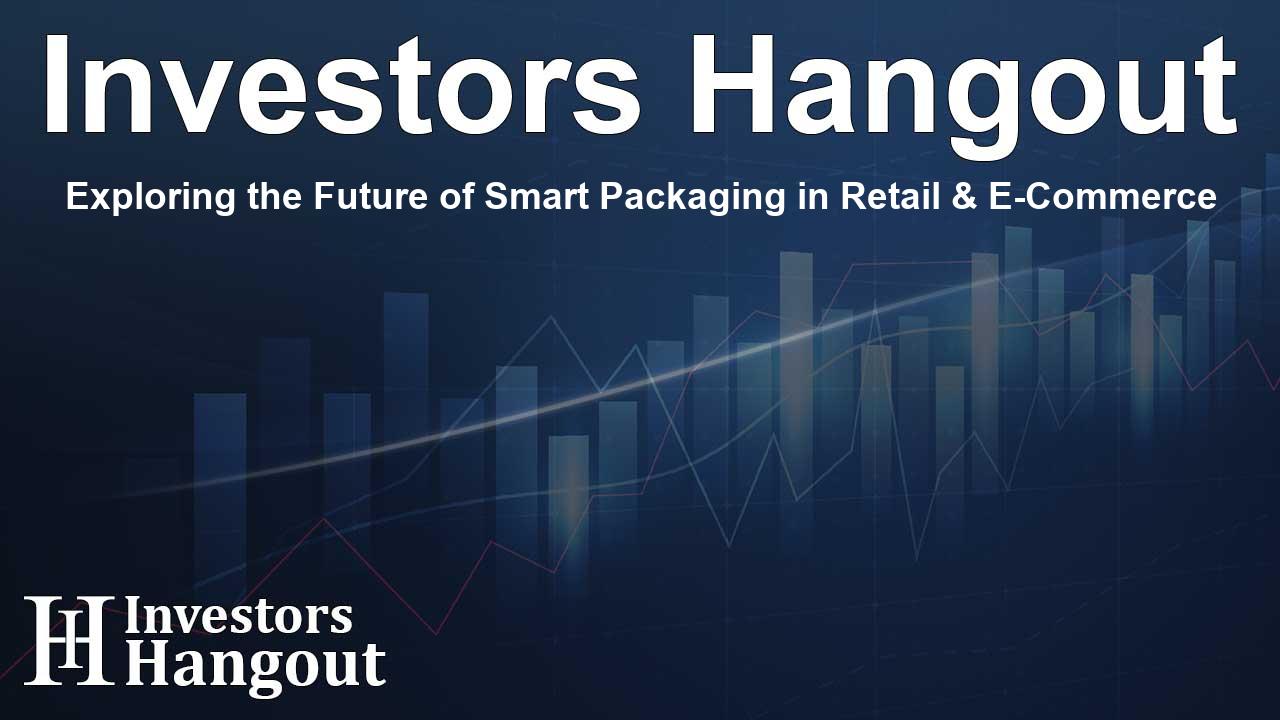Exploring the Future of Smart Packaging in Retail & E-Commerce

Trends Driving the Smart Packaging Revolution in Retail and E-Commerce
Smart packaging is rapidly transforming the landscape of retail and e-commerce. This evolution is not merely a trend but a response to the growing demands for better product safety, enhanced customer interaction, and efficient supply chain tracking. Thanks to a surge in e-commerce activities, businesses are realizing the value that interactive and secure packaging adds to the consumer experience.
The Role of Technology in Smart Packaging Innovations
Technological Developments Enhancing Functionality
Today’s smart packaging integrates advanced technologies, such as RFID, QR codes, and NFC, to improve functionality and safety. These technologies not only allow for real-time tracking and monitoring but also engage consumers on a deeper level. For instance, the use of RFID tags ensures inventory accuracy, while QR codes provide instant access to product information, creating a more informed consumer base.
Consumer Benefits and Interactive Features
Smart packaging goes beyond traditional functionalities; it integrates interactive elements aimed at enhancing consumer engagement. Brands are now using augmented reality features and gamified experiences to create unforgettable unboxing moments. This level of interaction allows companies to forge stronger connections with their consumers, thereby fostering brand loyalty and encouraging repeat purchases.
Emerging Trends Shaping the Market
Growing Sustainability Awareness
Today's consumers are increasingly environmentally conscious, with many preferring eco-friendly packaging solutions. Brands are responding by adopting biodegradable and recyclable materials. The trend goes hand-in-hand with intelligent packaging technologies, ensuring that while products are protected, they are also positioned in a sustainable manner.
Market Demographics: Shifts in Consumer Preferences
The rise of e-commerce has significantly altered consumer expectations. Companies are now compelled to offer personalized experiences through packaging that resonates with the customer. Data analytics and advancements in digital printing technology allow brands to tailor packaging designs to individual preferences, enhancing customer satisfaction.
Growth Potential of Smart Packaging
Impact of E-Commerce Expansion
The rapid growth of online shopping has heightened the demand for intelligent packaging solutions. As a result, many retailers are investing heavily in smart technologies to streamline their operations. This trend is not only affecting how products are packaged but also how they are delivered. Smart packaging ensures that products arrive safely, maintaining their integrity during transit.
Challenges and Limitations in the Market
Technological Barriers and Consumer Adoption
While the advantages of smart packaging are clear, several barriers hinder its widespread adoption. High integration costs of technologies like sensors and RFID tags can deter smaller businesses from investing. Moreover, many consumers are still unfamiliar with the concept of smart packaging, limiting its potential growth in the market.
Regional Analysis of Smart Packaging Adoption
North America: A Leader in Smart Packaging Innovation
North America stands at the forefront of the smart packaging industry, driven by a well-established e-commerce ecosystem. Prominent retailers are adopting advanced packaging solutions to secure product authenticity and ensure efficiency in supply chain management.
Asia-Pacific: The Fastest Growing Market
Countries in the Asia-Pacific are witnessing rapid growth in smart packaging adoption, primarily due to increased e-commerce and consumer demand for innovative solutions. The combination of enhanced logistics infrastructure and technology adoption is expected to stimulate this growth further.
Conclusion
Smart packaging for retail and e-commerce is more than just a technological advancement; it represents a shift in how products connect with consumers. As the industry progresses, focusing on integration, sustainability, and consumer engagement will be crucial for maintaining a competitive edge. Brands that embrace these changes are likely to thrive in the burgeoning e-commerce landscape.
Frequently Asked Questions
What is smart packaging?
Smart packaging refers to innovative solutions that incorporate advanced technologies like RFID and QR codes, enhancing product safety, tracking, and consumer engagement.
Why is sustainability important in smart packaging?
Consumers increasingly demand environmentally friendly solutions, prompting businesses to adopt sustainable practices in their packaging strategies.
How does smart packaging enhance consumer experience?
By integrating interactive features, smart packaging improves engagement, providing consumers with personalized experiences and instant access to product information.
What challenges do companies face with smart packaging?
High costs of technology integration and consumer unfamiliarity with smart packaging can hinder its widespread adoption among businesses.
What regions are leading in smart packaging adoption?
North America and the Asia-Pacific region are leading markets for smart packaging, driven by robust e-commerce ecosystems and increasing consumer demands.
About The Author
Contact Owen Jenkins privately here. Or send an email with ATTN: Owen Jenkins as the subject to contact@investorshangout.com.
About Investors Hangout
Investors Hangout is a leading online stock forum for financial discussion and learning, offering a wide range of free tools and resources. It draws in traders of all levels, who exchange market knowledge, investigate trading tactics, and keep an eye on industry developments in real time. Featuring financial articles, stock message boards, quotes, charts, company profiles, and live news updates. Through cooperative learning and a wealth of informational resources, it helps users from novices creating their first portfolios to experts honing their techniques. Join Investors Hangout today: https://investorshangout.com/
The content of this article is based on factual, publicly available information and does not represent legal, financial, or investment advice. Investors Hangout does not offer financial advice, and the author is not a licensed financial advisor. Consult a qualified advisor before making any financial or investment decisions based on this article. This article should not be considered advice to purchase, sell, or hold any securities or other investments. If any of the material provided here is inaccurate, please contact us for corrections.
